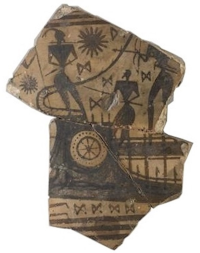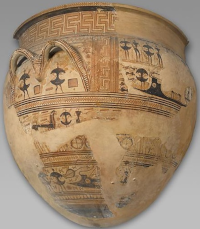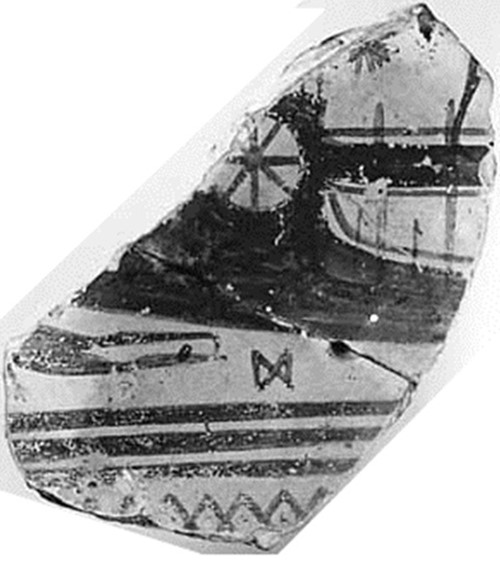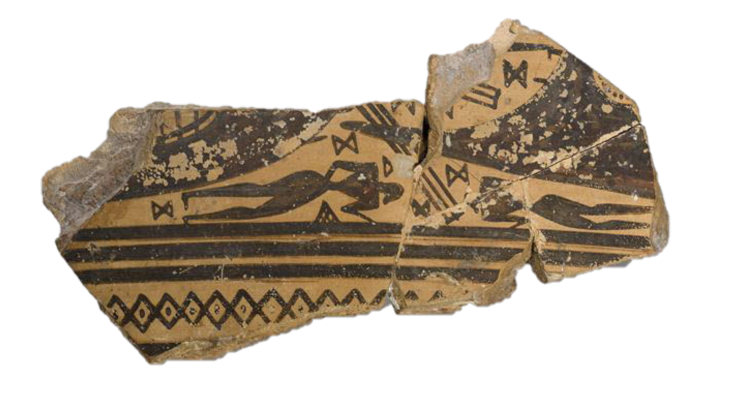A137a: Two double-levelled ships to the left, in the conventional Dipylon style, with the bow projection of one very close to the stern of the other. The left ship shows the bottom part of the stern with two short plank protrusions and the two steering oars visible. Lines A and B are preserved as well as two stanchions and one tholepin. The right ship preserves the bow projection which overlaps with the lower steering oar of the left ship, as well as a small portion of the eye, which has a reserved line with dots. There are two short plank protrusions from the stempost. Two corpses facing opposite directions are depicted floating below the hull of each ship. The lower part of a leg of another is visible above the second steering oar, touching the upper projecting plank of the right ship's stem.
A137b: Double-levelled ship to the left, in the conventional Dipylon style, with all the verticals and horizontals present, including the tholepins. Only part of the bow and hull remain, including an eight spoked eye, part of the latticed railing of the forecastle, and two tholepins. The lower part of the leg of a warrior standing on deck level (line D) and facing right is preserved, as well as the lower part of a corpse with the feet facing right below the bow.
A137c: Double-levelled ship to the left, in the conventional Dipylon style, with all the verticals and horizontals present, including the tholepins. The section consists of the rear end of the ship near the stern, with four stanchions and three tholepins preserved. This is indicated by the upward curve of lines A and B. Two warriors opposing each other stand on deck level (line D). The left figure appears to have struck the head of his opponent with a sword.














